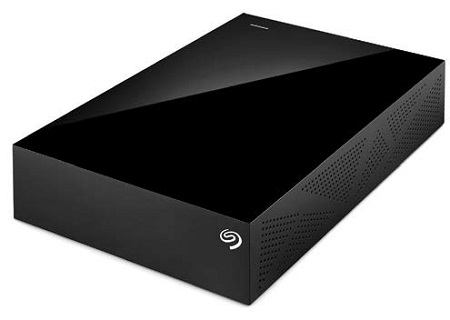Storage: Broadcasters Staying Local
OTTAWA, ONTARIO—Despite the growing call to move media to the cloud, most broadcasters and post houses are sticking with local data storage, according to broadcast equipment vendors.
“We are seeing some transition to using cloud storage for less-critical video files, but in general they want to keep their high-value content on the premises,” said Kevin Usher, director of segment and product marketing for broadcast and media for Avid Technology in Burlington, Mass. “Broadcasters and post houses see having data stored on local storage servers as giving them maximum control of their content, and providing optimal security.”
This is just one of the trends driving broadcast and post-production storage; trends that do still include a place for—wait for it—tape!

A 6 TB HDD like this one from Seagate only costs a few hundred dollars at Best Buy and other retailers, and less if bought on a volume basis from IT suppliers.
CHEAP AND EASY ACCESS\
Even in an age where cloud storage offers improved security, lower capital costs because cloud providers have to purchase servers to store data, and easy expandability, local video/data storage still dominates.
Control and security are among the driving factors for this trend. However, what also makes a difference is the very affordable cost of local storage; namely using servers containing hard disk drives. Their price tags are kept low by the constantly dropping price of HDD storage per gigabyte. A 6 terabyte HDD—which holds 6,000 GB—only costs a few hundred dollars at Best Buy and other retailers, and less if bought on a volume basis from IT suppliers.
“The low cost of HDDs in comparison to solid state drives continues to keep them in widespread use at broadcast facilities and post houses,” said Andy Warman, director of product management, production and playout for Harmonic in San Jose, Calif. “This IS why we are still seeing a trend for broadcasters and post houses to keep using HDDs; even though SSDs provide faster file access and run cooler.”
Get the TV Tech Newsletter
The professional video industry's #1 source for news, trends and product and tech information. Sign up below.
The desire for low-cost storage has prompted some broadcasters/post houses to continue using LTO high-capacity data tape, which they access either manually or using robotic “jukebox” machines to locate, play, and refile individual LTO tapes in a large library. Certainly LTO tape wins the price battle hands down over HDDs: A 6.5 TB (compressed data) LTO-6 tape costs around $30.
“Over time, LTO tape has continued to innovate, and with each generation has introduced new features,” said Terry Cochran, segment marketing manager for San Jose-based Quantum and a representative of the LTO Program. “LTFS [Linear Tape File System, which allows direct file access to users] is one such innovation, making tape an easy-to-use storage medium, while tape itself has continued to offer faster transfer speeds and higher capacity over time.”

Andy Warman, director of product management, production and playout for Harmonic
GETTING MORE OUT OF LOCAL STORAGE
For years, RAID (Redundant Array of Inexpensive Disks) has provided IT users with cheap mass server storage. The idea of RAID is that files are stored across multiple HDDs—with the ability to make redundant backups at the same time—so that a failure of an individual disk won’t cause a serious data loss.
Object-based storage—also known as object storage—takes this idea a step further. It stores files as metadata-identified “objects” in a common storage pool, rather than as separate files organized in a hierarchical structure. “Object-based storage provides higher resiliency, more capacity, and lower cost than RAID,” said Alex Grossman, Quantum’s vice president of media and entertainment. “You can support far more disks in an object-oriented system, store and access data more efficiently, and do so for less money.”
A simple way to understand object-based storage is to see it as an IT version of valet parking. The driver (user) doesn’t know where the valet (storage system) has parked their car (object of data) in the parking lot (common data pool), but can get the valet to retrieve the car using their parking receipt (the metadata identifier attached to the object).
THE CLOUD HAS ITS PLACE
Even though broadcasters and post houses are focussed on using local storage, some are also using the cloud in a “hybrid” approach to storing data. “The cloud can be used to store lower priority data, including video files that are either being archived, and/or being kept close to the Web for streaming online,” said Usher. “Off-premises storage can relieve pressure on a company’s in-house storage system, while ensuring that these files are easy to access at the desktop.”
As cloud-based storage improves its reputation for security and control by data owners, broadcasters and post houses will probably shift more of their content to the Web. But the demand for fast video file access will likely keep both video sectors reliant on local storage, because the Web still cannot match the fast, reliable throughput of an in-house LAN. As a result, most data storage will remain local for broadcasters and post houses in the foreseeable future—and on hard drive-based servers.
James Careless is an award-winning journalist who has written for TV Technology since the 1990s. He has covered HDTV from the days of the six competing HDTV formats that led to the 1993 Grand Alliance, and onwards through ATSC 3.0 and OTT. He also writes for Radio World, along with other publications in aerospace, defense, public safety, streaming media, plus the amusement park industry for something different.

